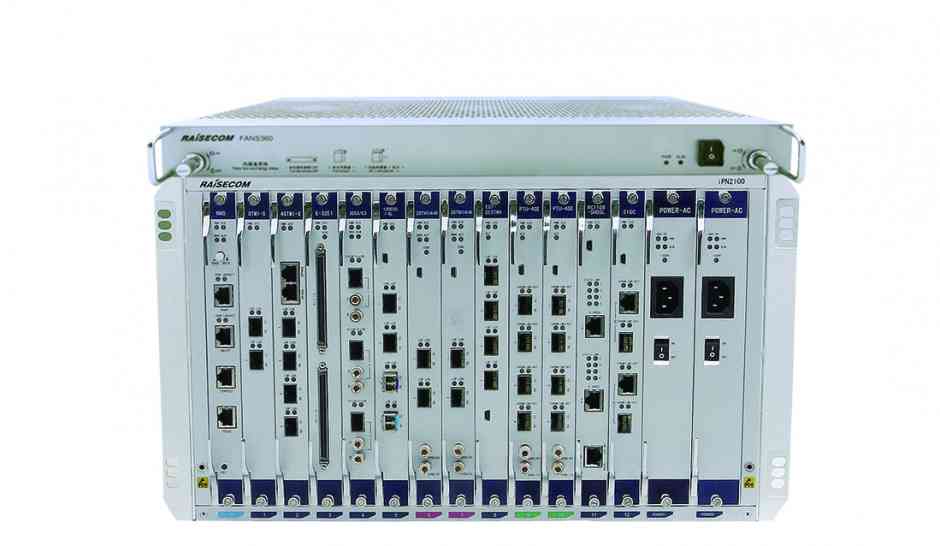


iTN2100 is a high-capacity, modular PTN aggregation platform developed by Raisecom, designed to deliver both Ethernet and TDM services with dual-core architecture. The platform supports carrier-grade business applications and mobile backhaul, enabling operators to smoothly transition from traditional legacy services to next-generation networks.
iTN2100 is a high-capacity, modular PTN aggregation platform developed by Raisecom, designed to deliver both Ethernet and TDM services with dual-core architecture. The platform supports carrier-grade business applications and mobile backhaul, enabling operators to smoothly transition from traditional legacy services to next-generation networks.
It has a 6U/15-slot chassis and offers up to 104 Gbps high-order cross-connection capacity across the whole system. It supports a wide variety of service types over copper or fiber legacy lines, along with IP services. Hardware redundancy is built in, with full protection for components to ensure uptime; on the Ethernet side it supports G.8032 (ERPS) and G.8031 (ELPS), while in the MPLS-TP domain it offers Wrapping/Steering ring protection and linear protection. For SDH side, it supports 1+1 liner MSP and SNCP protection.
iTN2100 supports MEF-compliant CE2.0 Ethernet services, voice/E1/T1, fiber multiplexing, and pseudowire connectivity, suitable for leased lines and mobile backhaul for 2G/3G/LTE networks. It also integrates with MPLS-TP and IP/MPLS backbones and supports synchronization methods including SyncE and IEEE 1588v2 PTP. Optional external clock inputs/outputs of 2 MHz or 2 Mbit/s are available.
Service interface flexibility is strong: on the uplink side, line-side options include up to 4 × STM-16 SFPs or SFPs and on the client side up to 40 × STM-1 SFPs; tributary/client side also supports STM-1, EoTDM, PWE3, FiberMux, FE, DS3, E3, E1, Voice, V.35, V.24, RS232 etc. Additional cards are supported such as GE/FE aggregation, SDH aggregation, tributary and voice/data cards.
Management and OAM capabilities include IEEE 802.3ah, 802.1ag, ITU-T Y.1731/SLA, L2 MPLS-TP OAM for LSP/PW/section levels. There are also features like VLAN, QinQ, QoS, LACP and static MPLS compliant with MPLS-TP. Port and VLAN/EVC/COS statistics are supported.
Protection and resiliency features include full hardware redundancy for key sub-cards and power supplies, uplink redundancy, and protection schemes across Ethernet, MPLS-TP, and SDH. Also safety features such as Auto Laser Shutdown (ALS) protection and Dying Gasp are supported.
